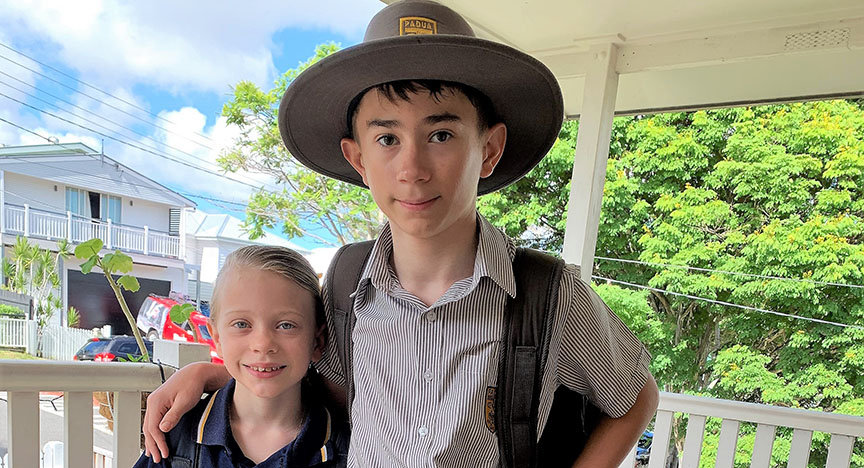
With Type 1 diabetes present in her family, Erin knew the warning signs to look out for. When her daughter, Lucy, started showing symptoms in May 2021 she knew she needed to be seen by a doctor immediately – but she never expected both her children to be diagnosed with the condition just three days apart.
“Lucy began to lose weight and wet the bed. Her hair had started to fall out in clumps,” Erin said.
Concerned that seven-year-old Lucy may have been showing the first signs of Type 1 diabetes, Erin asked her sister (who lives with the condition) to test Lucy’s blood glucose levels using her finger-prick device while they waited for a GP appointment.
The test showed Lucy had high blood sugar levels, and then she started to become unwell, so Erin rushed her to their local emergency department.
Lucy had developed a serious condition called diabetic ketoacidosis that occurs when the body produces high levels of toxic blood acids called ketones as a result of very high blood glucose levels caused by a lack of insulin.
Diabetic ketoacidosis most commonly occurs when a diagnosis of Type 1 diabetes is first made. Lucy was quickly diagnosed with the condition and spent her first night in hospital in intensive care. At the same time as her condition was starting to stabilise, her older brother Thomas’s health took an unexpected turn.
“After coming out of intensive care with Lucy, I picked up Thomas from a sleepover. Immediately, I could smell the ketones on his breath, so I did a test with Lucy’s new kit,” Erin said.
“When I rang the on-call endocrinologist to tell her about his stupidly high reading, she asked if we had washed his hands before I tested him. I stopped crying and started laughing, because if she didn’t believe the result, then it was OK for us to feel crazy, too.”
Barely three days (50 hours to be precise) after Lucy’s diagnosis, Erin received the news that 12-year-old Thomas had the same life-long condition.
Type 1 diabetes is known to run in families, but the onset is often sudden and unexpected – just as Lucy and Thomas both experienced.
Erin said the following two weeks were a whirlwind as their family learned how to stabilise both children’s blood sugar levels and transition them back to school with the help of doctors and diabetes educators.
“The kids have been amazing, but there are times when they hide in the bedroom and say they would rather not eat than have another needle.”
“We always tell them tomorrow will be easier, and just try to keep them healthy and happy.”
Erin said her family approaches their new routine of daily medication management, glucose monitors, needle stocks, carbohydrate portions and nutrition as a united unit.
“If we were going to have a childhood illness in our family, this is the one I feel like we were born to manage – we make a good team,” she said.